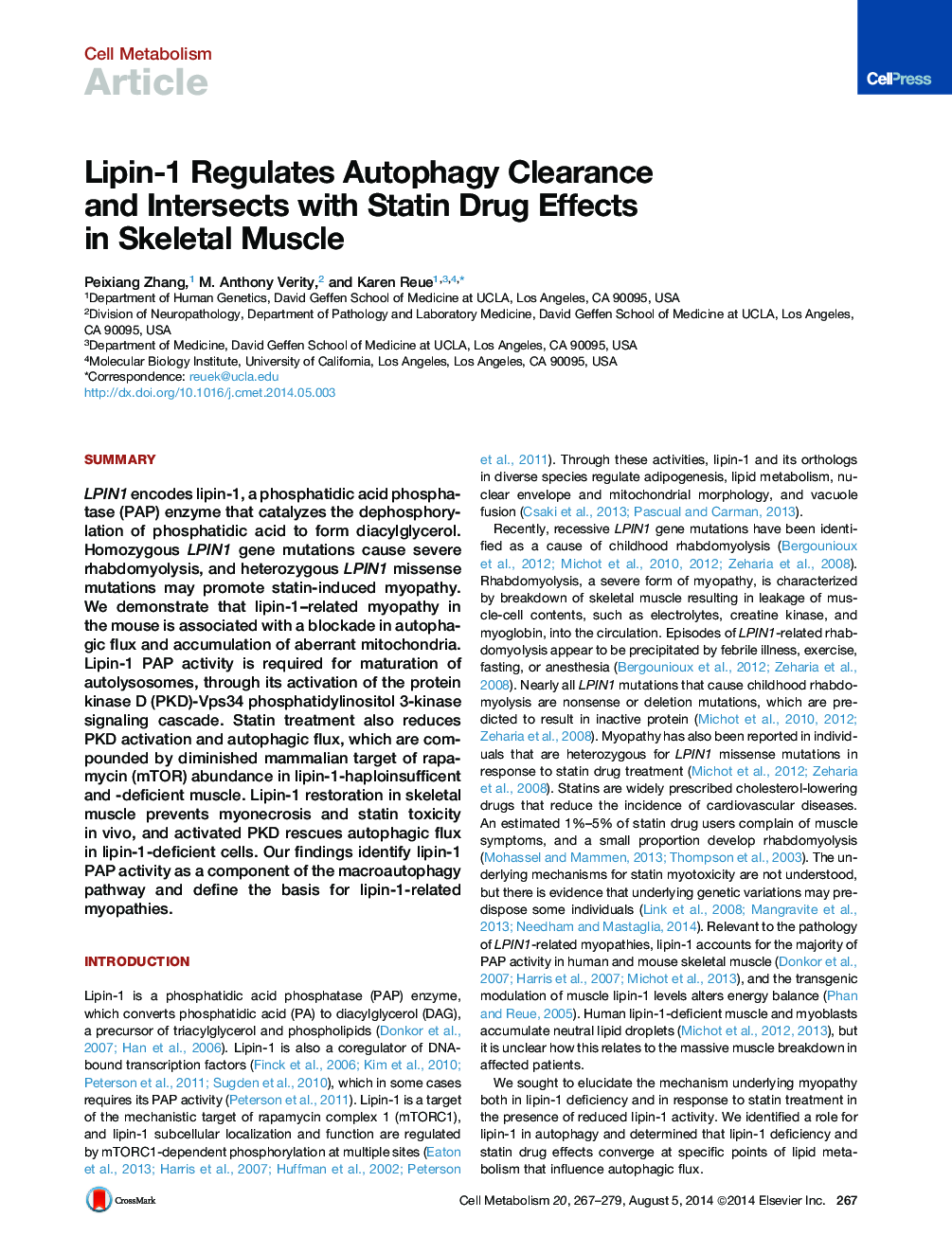| Article ID | Journal | Published Year | Pages | File Type |
|---|---|---|---|---|
| 2792604 | Cell Metabolism | 2014 | 13 Pages |
•Lipin-1 deficiency causes muscle damage related to impaired autophagy clearance•Lipin-1 phosphatidate phosphatase activity promotes autolysosome maturation•Autophagy flux in lipin-1-deficient cells is rescued by activated protein kinase D•Lipin-1 and statin drug effects converge in the autophagy pathway in muscle
SummaryLPIN1 encodes lipin-1, a phosphatidic acid phosphatase (PAP) enzyme that catalyzes the dephosphorylation of phosphatidic acid to form diacylglycerol. Homozygous LPIN1 gene mutations cause severe rhabdomyolysis, and heterozygous LPIN1 missense mutations may promote statin-induced myopathy. We demonstrate that lipin-1–related myopathy in the mouse is associated with a blockade in autophagic flux and accumulation of aberrant mitochondria. Lipin-1 PAP activity is required for maturation of autolysosomes, through its activation of the protein kinase D (PKD)-Vps34 phosphatidylinositol 3-kinase signaling cascade. Statin treatment also reduces PKD activation and autophagic flux, which are compounded by diminished mammalian target of rapamycin (mTOR) abundance in lipin-1-haploinsufficent and -deficient muscle. Lipin-1 restoration in skeletal muscle prevents myonecrosis and statin toxicity in vivo, and activated PKD rescues autophagic flux in lipin-1-deficient cells. Our findings identify lipin-1 PAP activity as a component of the macroautophagy pathway and define the basis for lipin-1-related myopathies.
Graphical AbstractFigure optionsDownload full-size imageDownload high-quality image (238 K)Download as PowerPoint slide
